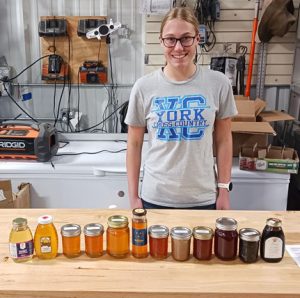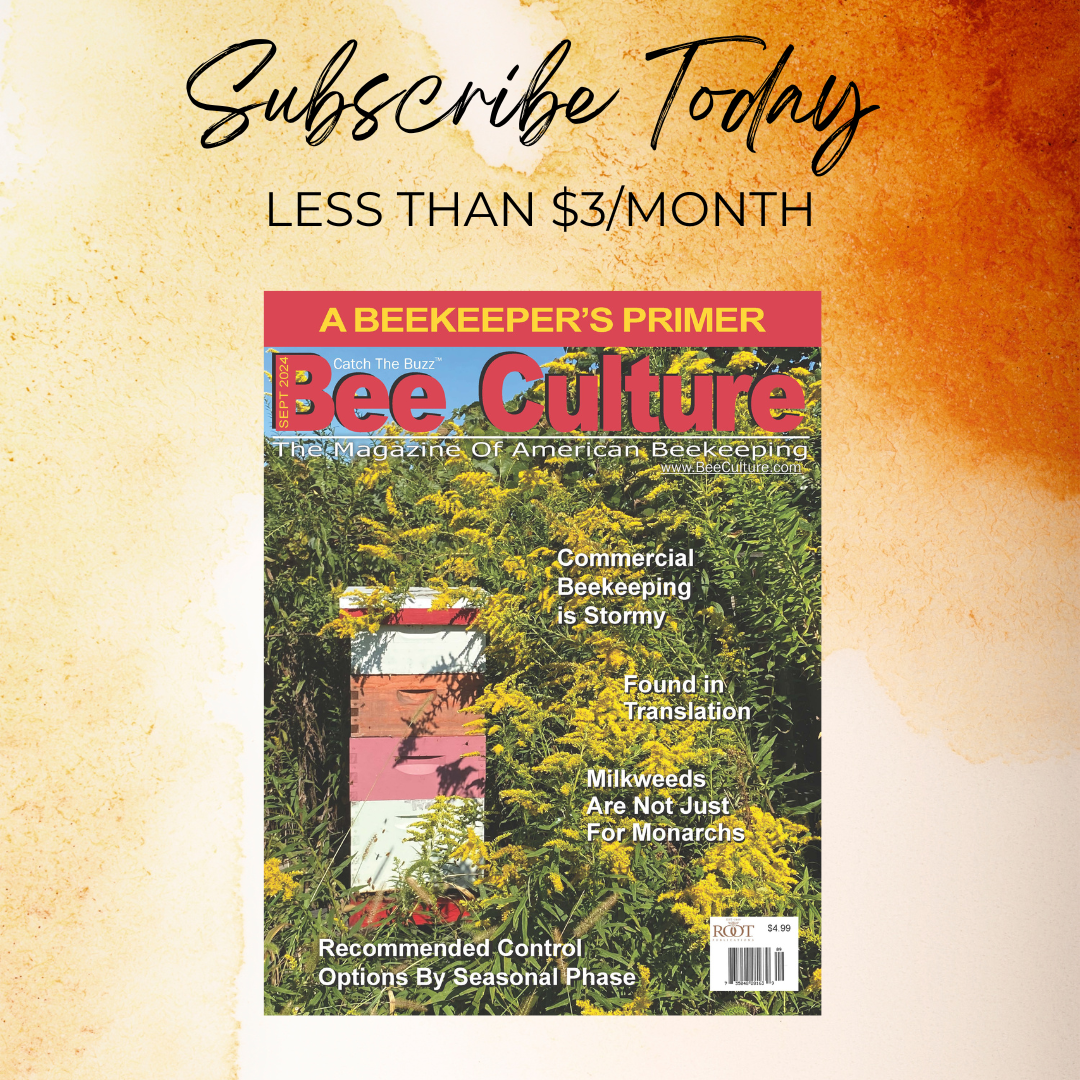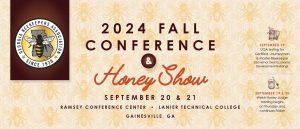2024 4-H Essay Contest Varietal Honeys- Third Place Winner, Naomi Renner
Foundation for the Preservation of the Honey Bees, Inc.
For more information, please visit: https://preservationofhoneybees.org/third-place-naomi-renner-nebraska/
 Varietal Honeys
Varietal Honeys
Did you know there are over 300 unique types of honey in the U.S., and many more throughout the world (National Honey Board)? These types are referred to as varietals!
Varietals continue to be an engaging topic because of the creation process, their uniqueness and authenticity, and their importance to us both culturally and economically. It’s time to discover the fascinating world of varietal honeys.
First, let’s address the process of how varietals are made. The creation of different honey types depends on the plants bees pollinate. These honey types vary in taste, viscosity, texture, and even color. There are two main classifications of honey: monofloral and polyfloral.
Polyfloral (or multifloral) honey is made from the nectar of two or more plant species. Often multifloral honey is distributed as “wildflower honey.” On the other hand, monofloral honey, also referred to as varietal, comes predominantly from just one kind of flower (Uren Food Ingredients).
Monofloral honey is relatively difficult to determine. Classification as monofloral depends on the percentage of pollen from that particular plant species the honey contains. The honey must be analyzed and the pollen grains counted. Usually the pollen percentage from the source claimed as monofloral must be 45% or greater. However, because flowers vary in the amount of pollen held, it could possibly be as small as 15% and still be classified as single flower honey. The country from which the honey originates is in most cases able to set its own specifications (Honey Traveler).
Let’s look at a few major varietals and some of their unique characteristics. Of course, when honey is labeled as “wildflower,” it’s the term for honey made from a variety of plants. Its attributes depend completely on the time of year, nearby plants, and harvest location of the honey. Some of the more common types of monofloral honey include clover and dandelion, abundant throughout the U.S. Clover honey is usually a light golden color with a mild flavor. Dandelion has a thicker viscosity and is bright yellow-gold (Best Bees Company). Other kinds like star thistle and avocado blossom honey are lesser known but still important varietals. The star thistle is an invasive plant in some areas, but the honey produced from it is nutritious with a delicious floral taste and almond-like scent (Sleeping Bear Farms). Avocado honey, one of the rarer varietals, can be found in California. Sweet and creamy, it can be easily substituted for molasses, cane syrup, or regular white sugar in almost any recipe (Wildflower Meadows)!
Rare plant species often lead to valuable varietals, and other factors such as medicinal benefits and the amount of difficulty to obtain can contribute to this as well. Some examples of important varietals include Manuka, Yemeni Sidr, Bashir, and Himalayan honeys (Ecocolmena). The value of these brings up the question of how to be certain of buying the true varietal and not a fraud.
Honey can be analyzed to check for pollen grains of the plants from which the honey is claimed to be. It’s a relatively complex process to describe, but in short, the honey is diluted in warm, distilled water. Then it’s centrifuged and studied under a light microscope so the analysts can identify the main pollen type (National Library of Medicine). Once the honey has been verified, some receive a certification so purchasers will know it’s authentic.
In Manuka’s case, a strict grading system is used. Manuka, native to Australia and New Zealand, contains three compounds unique to only its species: Leptosperin, DHA, and MGO. There are several standards used to measure these, but the UMF standard of New Zealand is the toughest. UMF stands for “Unique Manuka Factor” and specifically serves as a measurement of MGO in the honey. MGO is the compound that gives Manuka most of its antibacterial effects, increasing its value. The grading range spans from UMF 5+ to UMF 20+, with a higher number meaning increased antibacterial effectiveness. In Australia, look for honey labeled as AMHA Authentic or AMHA Authorised according to the country’s own grading system. When searching for authentic Manuka honey, also keep in mind that it’s more likely to be the real thing if it was made in New Zealand or Australia (Healthline). Not all honey has its own certification like Manuka, so before buying make sure to pay close attention to the wording on the bottle.
Honey products that state “infused with,” “flavored,” or “essence of” are not a true varietal. If there are plant parts floating in the bottle, it’s probably a cause for suspicion (Honey Bee Suite).
Lastly, there are many varietals that are culturally or economically important–both in the U.S. and around the world. In parts of Florida and Georgia that include the Apalachicola River Basin, tupelo honey is frequently used during the festival of Rosh Hashanah (Miami New Times). Those who observe this Jewish holiday eat apples with honey. Tupelo, only commercially produced in this specific region, is a popular choice for the festival because it complements the apples’ flavor. Across the Atlantic, honey is also used prolifically in Italian cuisine. Acacia honey can be added to a dish without covering up other flavors. Lime honey is used for desserts (Wanted in Rome).
On the economic side, North Dakota is the number one honey-producing state in the U.S. Their honey production was valued at a total of $82 million in 2022 (North Dakota Department of Agriculture). Their main varietals include alfalfa, buckwheat, canola, and clover.
Internationally, lavender honey in France is economically important. An estimated 2,200 tons of honey is produced each year from the region of Provence, France (Apiculteurs en Provence).
Lavender honey from Provence is famous worldwide.
Everyone should strive to gain an appreciation of varietal honeys. Knowing what makes a varietal, being aware of examples, recognizing authenticity, and demonstrating a strong grasp on the cultural and economic significance of varietals will ultimately benefit one’s future in honey production as well as improve one’s understanding of the beekeeping and honey process.
Works Cited
“The 8 most expensive honeys in the world for their qualities.” Ecocolmena, https://www.ecocolmena.org/the-8-most-expensive-honeys-in-the-world-for-their-qualitie s/. Accessed 13 April 2024.
“About Star Thistle Honey.” Sleeping Bear Farms,
https://www.sleepingbearfarms.com/about-star-thistle-honey/. Accessed 14 April 2024. “Apiary (Honey Bees).” North Dakota Department of Agriculture, 2023,
https://www.ndda.nd.gov/divisions/plant-industries/apiary-honey-bees. Accessed 13
April 2024.
“Avocado Blossom Honey.” Wildflower Meadows, 15 April 2022, https://wildflowermeadows.com/2022/04/avocado-blossom-honey/. Accessed 14 April 2024.
Burlew, Rusty. “Lavender honey from the source.” Honey Bee Suite, 2017, https://www.honeybeesuite.com/lavender-honey-from-the-source/. Accessed 14 April 2024.
Codik, Emily. “How to Buy Local Honey For Rosh Hashanah.” Miami New Times, 14 September 2012,
https://www.miaminewtimes.com/restaurants/how-to-buy-local-honey-for-rosh-hashanah
-6579682. Accessed 11 April 2024.
“From Orange Blossom to Acacia: Understanding the Different Varieties of Honey.” Uren Food Group, https://www.uren.com/news/varieties-of-honey/. Accessed 11 April 2024.
“Honey in Italy: A Brief Introduction.” Wanted in Rome, 5 July 2022, https://www.wantedinrome.com/news/honey-in-italy-a-brief-introduction.html. Accessed 14 April 2024.
“Honey Varietals.” National Honey Board, 2024, https://honey.com/about-honey/honey-varietals.
Accessed 2 March 2024.
“L’apiculture en région PACA – L’apiculture provençale en quelques chiffres.” Miels de Provence, https://www.miels-de-provence.com/apiculture-aujourd-hui.php. Accessed 14 April 2024.
Marengo, Katherine. “How to Buy Manuka Honey: Here’s What to Look Out For.” Healthline, 19 November 2020,
https://www.healthline.com/nutrition/how-to-select-manuka-honey#Manuka-honey-uses. Accessed 2 March 2024.
Nascimento, Fabio S. “Honey Pollen: Using Melissopalynology to Understand Foraging Preferences of Bees in Tropical South India.” NCBI, 8 July 2014, https://www.ncbi.nlm.nih.gov/pmc/articles/PMC4086892/. Accessed 13 April 2024.
Schmus, Brittany. “15 Types of Honey and How to Taste the Difference.” The Best Bees Company, 26 October 2022, https://bestbees.com/2022/10/26/types-of-honey/. Accessed
2 March 2024.
“Single Flower Honey | Monofloral Honey | Honey Varietals.” Honey Traveler, https://www.honeytraveler.com/single-flower-honey/. Accessed 13 April 2024.






